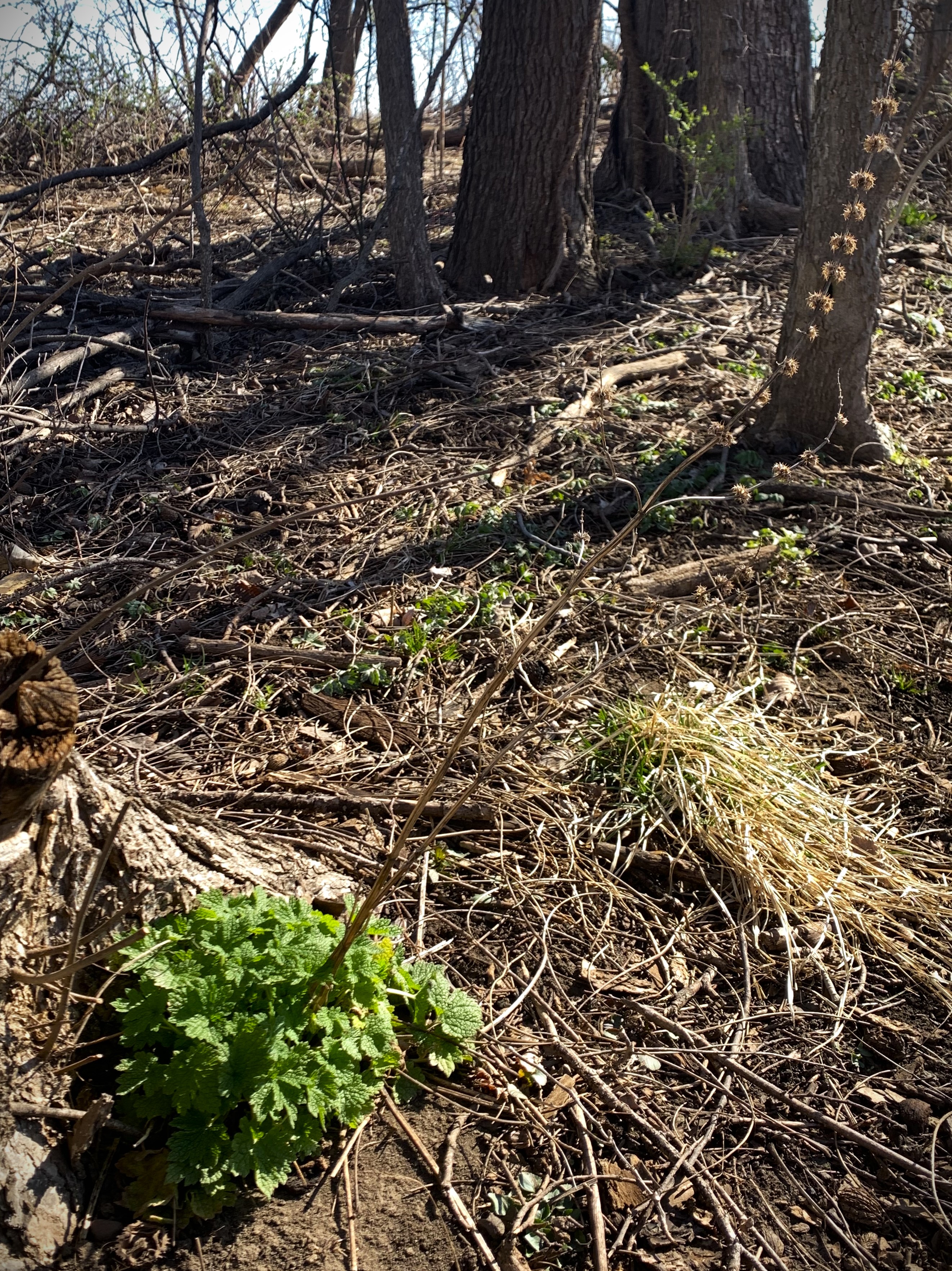On a windy day in early April, we took a walk-about in the yard on Owl Acres to see what was happening. The weather had been erratic, getting warm, then cold, then warm again. It rained, snowed, and blew a gale for several days.
For the most part, winter was hanging on, with last year’s grass still waiting for the right time to green up. One of the few plants that seemed to have gotten a head start on spring providing, hopeful green patches in the yard, was motherwort. A member of the mint family, motherwort goes by several names including common motherwort, lion’s ear, throw-wort, lion’s tail, and its formal name (Leonurus cardiaca) which combines its appearance like a lion’s tail, and its medicinal uses for the heart.
Nicholas Culpeper (1616-1654) was an Englishman with particular interest in astrology and herbs. His book, published in 1653, and titled The Complete Herbal, catalogued and described the herbal medicines and lore of his time. His entry on motherwort included this advice:
“Venus owns the herb, and it is under Leo. There is no better herb to take melancholy vapours from the heart, to strengthen it, and make a merry, cheerful, blithe soul than this herb. … Besides, it makes women joyful mothers of children, and settles their wombs as they should be, therefore we call it Motherwort. It is held to be of much use for the trembling of the heart, and faintings and swoonings; from whence it took the name Cardiaca. The powder thereof, to the quantity of a spoonful, drank in wine, is a wonderful help to women in their sore travail, as also for the suffocating or risings of the mother, and for these effects, it is likely it took the name of Motherwort with us. …” He continues with its medicinal effects in killing intestinal worms, preventing cramps and convulsions, and helping with joint aches.
No 21st century scientific studies have validated the 17th-century claims of this plant, but modern herbalists are still using it for a variety of applications.
While we’re on the subject of names, I wondered what the wort in motherwort meant. A whole long list of plants have wort in their names. The word comes from Old English and basically means plant. It is used, however, to designate an herbaceous plant that is used in some way as medicine. So lungwort is good for the lungs, and liverwort is good for the liver. St. John’s wort is said to be very calming, and trophywort (AKA nasturtium) is used for bronchitis. (Now what do you suppose dragonwort or witch’s wort is good for?) So obviously, motherwort is so named because it is good for mothers.
Out in the yard, we found clumps of these leaves growing at the foot of last year’s stalks. Each leaf was about an inch long and an inch wide at the base. It reminded me of maple leaves. Each leaf was divided into five lobes, and near the end of each lobe it divided into three smaller segments. The texture of the leaf is somewhat rough and hairy, it has a toothed edge, and it stands on a stem about two inches long. The leaves were just beginning and would grow larger as spring wore on. Its taste is bitter and not recommended for eating.
By the time motherwort flowers in July and August, the central stalk will have grown three to four feet tall with multiple branches reaching out. Spikes of small, fuzzy, tubular pink to purple flowers will appear at the ends of the branches. By fall they will be replaced with reddish-brown, three-sided seed capsules containing four seeds apiece.
Motherwort is a perennial plant, coming back year after year and spreading from its roots to form expanding colonies in disturbed areas, roadsides and fields. They also spread by their seeds. They are generally considered weeds.
Motherwort is not native to Iowa. It was introduced to North America as a medicinal plant and, like so many others, escaped the gardens and herbariums to compete successfully with native plants. Because it evolved in Asia and is an invasive plant in Iowa, it doesn’t have any butterflies or moths specifically co-evolved with it like say the milkweed does. It does, however, provide nectar for bees and other pollinators.
Photo by author. Alt text: This year’s leaves and last year’s stalk at the base of a tree in the north fencerow. As a perennial, Motherwort is one of the first plants to green up in the spring.
